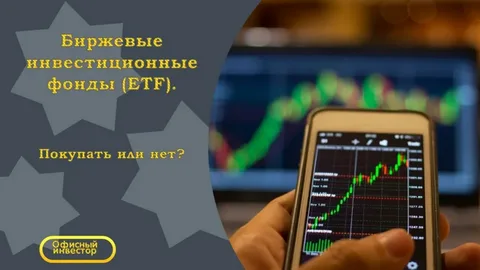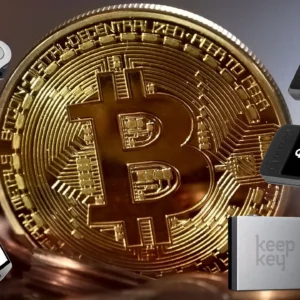Introduction
In a significant move that could reshape Russia’s financial landscape, the Bank of Russia launches a 3-year crypto trading experiment for wealthy investors, marking a major shift in the country’s approach to digital assets. Traditionally known for its strict stance on cryptocurrencies, the Russian central bank is now exploring regulated trading avenues, signaling potential long-term changes in its financial policies.
This initiative comes at a time when global regulatory frameworks for digital assets are evolving rapidly. With Bank of Russia’s economic landscape facing sanctions and restrictions from Western economies, this experiment may provide new investment opportunities for the country’s elite. But what does this mean for investors, the broader financial system, and the future of cryptocurrency in Russia?
In this article, we will explore the key aspects of the Bank of Russia’s 3-year crypto trading experiment, the eligibility criteria, regulatory implications, and the potential impact on Russia’s financial sector.

The Purpose of the Crypto Trading Experiment
The Bank of Russia launches a 3-year crypto trading experiment for wealthy investors with a specific objective: to assess the viability of integrating cryptocurrencies into the country’s regulated financial ecosystem. This move is not about full-scale adoption but rather a controlled environment to study the risks and benefits associated with crypto trading.
Some of the core reasons behind this experiment include:
- Testing Regulatory Measures: The central bank aims to evaluate whether existing regulations can be adapted to include crypto trading without destabilizing the financial market.
- Exploring Alternative Investment Avenues: With increasing sanctions and economic pressures, Russia is looking for new financial instruments to support its high-net-worth individuals.
- Minimizing Financial Risks: The controlled experiment will allow the central bank to monitor market fluctuations and investor behaviors before considering broader crypto adoption.
Despite previous restrictions on crypto-related activities, this initiative indicates a shift in the government’s perspective, hinting at a potential softening of anti-crypto regulations in the future.
Eligibility Criteria: Who Can Participate?
Since the Bank of Russia launches a 3-year crypto trading experiment for wealthy investors, participation is strictly limited to high-net-worth individuals and institutional investors. The government is not opening crypto trading to the general public, emphasizing a cautious and measured approach.
The eligibility criteria for participants include:
- Accredited Investor Status: Only those who meet the Russian government’s definition of a “qualified investor” can take part in the experiment.
- Minimum Financial Threshold: Investors must prove significant assets or financial holdings to qualify.
- Strict Compliance Measures: Participants must adhere to strict financial reporting and taxation requirements.
By restricting access to wealthy investors, the central Bank of Russia aims to minimize potential risks while gaining insights from financially stable individuals who can absorb market volatility. This also ensures that the crypto market does not become a tool for small-scale, unregulated speculation.
Potential Impact on Russia’s Financial System
The Bank of Russia launches a 3-year crypto trading experiment for wealthy investors, and its outcomes could have far-reaching implications for the country’s financial landscape. While the experiment is designed as a controlled initiative, its success or failure will likely shape future regulatory decisions.
1. Potential Growth of the Russian Crypto Market
If the experiment proves successful, Bank of Russia could see an expansion of legal and regulated crypto trading platforms. This would encourage further investment in digital assets, boosting the country’s overall financial sector.
2. Strengthening Russia’s Alternative Financial Channels
With Western sanctions restricting access to international banking systems, Russia has been actively exploring alternative financial tools, including blockchain technology and digital currencies. The success of this initiative could provide new ways for Russian investors to diversify their portfolios beyond traditional markets.
3. Increased Institutional Involvement in Crypto
If major financial institutions participate in the experiment, it could pave the way for broader adoption of blockchain-based financial solutions in Russia. Banks, investment firms, and fintech startups may start integrating crypto-related services into their offerings.
4. Regulatory Precedents for Future Crypto Laws
The experiment will help the Russian government determine the feasibility of introducing formal regulations for crypto trading. If successful, it could lead to a structured framework for digital asset management, taxation, and compliance, making crypto trading more accessible in the long run.
Challenges and Risks of the Crypto Trading Experiment
While the Bank of Russia launches a 3-year crypto trading experiment for wealthy investors, this initiative is not without its challenges and risks.
1. Regulatory Uncertainty
Although this experiment is government-backed, crypto regulations in Russia have been inconsistent. A sudden shift in policy could disrupt the progress made during the trial period.
2. Market Volatility
Cryptocurrencies are notoriously volatile. Even wealthy investors with significant risk tolerance may face losses, raising concerns about how market downturns could impact financial stability.
3. Potential for Money Laundering and Evasion
Given Russia’s strained relations with global financial institutions, international regulators may scrutinize this experiment, fearing that crypto trading could be used to bypass sanctions. Stricter anti-money laundering measures will likely be necessary.
4. Limited Accessibility
Since the experiment is only open to wealthy individuals, the general public remains excluded from participating. This raises questions about the long-term inclusivity of crypto in Russia’s financial system.
Despite these risks, the experiment presents a unique opportunity for Russia to refine its approach to crypto trading and determine whether digital assets can play a formal role in its economic future.
Conclusion
The fact that the Bank of Russia launches a 3-year crypto trading experiment for wealthy investors represents a pivotal moment in the country’s evolving stance on digital assets. While the initiative is designed as a controlled and cautious experiment, it signals a potential shift in Russia’s approach to cryptocurrencies.
If successful, this experiment could lay the groundwork for broader crypto adoption, institutional involvement, and regulatory clarity in Russia’s financial system. However, challenges such as market volatility, regulatory uncertainty, and international scrutiny remain significant hurdles.
As the experiment unfolds, investors and financial experts will closely monitor its progress. Will this initiative pave the way for a fully regulated Russian crypto market, or will it reinforce the country’s historically restrictive stance on digital assets? Only time will tell.
What are your thoughts on the Bank of Russia’s 3-year crypto trading experiment? Do you think this could lead to wider crypto adoption in Russia? Share your opinions in the comments below!







This Post Has One Comment